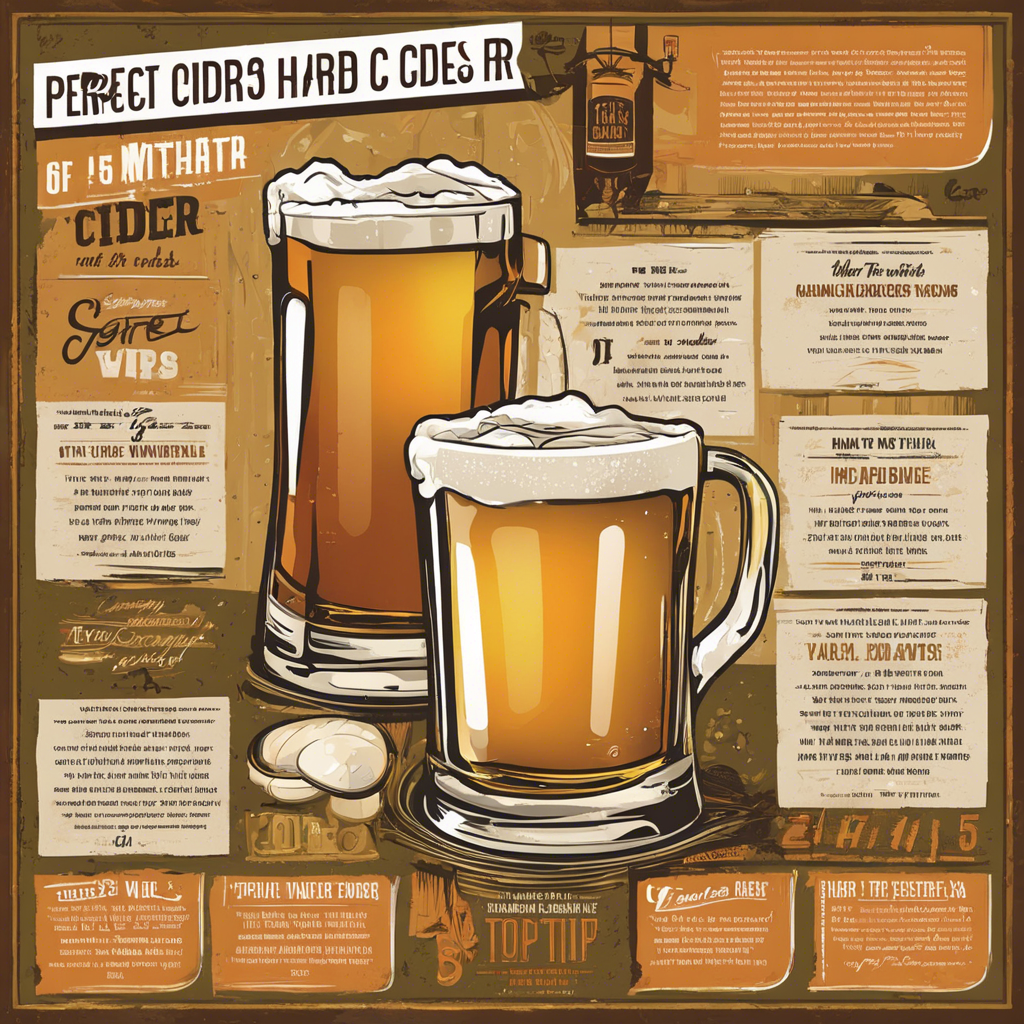Making hard cider at home is a fun and rewarding process that has gained popularity in recent years. With the right ingredients and techniques, you can craft a delicious, perfect hard cider to enjoy and impress your friends. Here are my top five tips to help you achieve perfection:
Paragraph 1:
Start with the best quality apples you can find. The old saying, “an apple a day keeps the doctor away” rings true here. The quality of your apples will greatly impact the final product. Choose apples that are ripe, fresh, and preferably organic. Avoid apples with bruises or signs of decay. If you can, go to a local orchard and pick your own apples, ensuring the freshest possible produce. The type of apples you use will also make a difference. A blend of sweet and tart apples will give your cider a well-rounded flavor profile. Popular choices include Gala, Honeycrisp, Granny Smith, and Cripps Pink.
Paragraph 2:
Sanitize, sanitize, sanitize! This step is critical to ensuring your hard cider is safe to drink and doesn’t turn into vinegar. Any equipment that comes into contact with your cider, from the grinder to the bottles, must be thoroughly sanitized. Use a no-rinse sanitizer or a solution of unscented household bleach and water, following the manufacturer’s instructions. Make sure to sanitize your work area as well, creating a sterile environment to minimize the risk of contamination.
Paragraph 3:
Pay attention to the specific gravity. This measurement indicates the amount of sugar in your cider, which will eventually be converted into alcohol during fermentation. A hydrometer is an essential tool for measuring specific gravity. Take an initial reading before adding yeast to determine your cider’s potential alcohol content. During fermentation, take additional readings to track the progress. Once the specific gravity stabilizes, your cider is likely finished fermenting.
Paragraph 4:
Choose the right yeast for the job. Yeast plays a crucial role in fermenting the sugars in your cider and determining the final alcohol content and flavor profile. There are specific types of yeast tailored for cider making, such as champagne yeast, which produces a dry, crisp cider, or ale yeast, which can add more complex flavors. Follow the manufacturer’s instructions for proper rehydration and pitching rates to ensure a healthy fermentation.
Paragraph 5:
Age your cider for a smoother, more refined flavor. After the initial fermentation, transfer your cider to a glass carboy or stainless-steel vessel and age it for several months. This process allows the flavors to meld together and mellows out any harsh notes. During aging, you can also experiment with adding different types of wood chips, such as oak or applewood, to impart unique flavors and aromas to your cider.
Paragraph 6:
When it comes to bottling, priming is key. If you want your hard cider to be carbonated, you’ll need to prime it with a small amount of sugar before bottling. This will trigger a secondary fermentation in the bottle, creating those delightful bubbles. Use a priming calculator to determine the right amount of sugar needed based on the volume of cider and your desired carbonation level.
Paragraph 7:
Take detailed notes throughout the process. Note-taking is an often-overlooked step, but it is crucial to refining your hard cider-making skills over time. Record everything from the types and quantities of apples used, yeast strains, fermentation temperatures, and specific gravity readings at each stage. This will help you identify what worked well and what could be improved for your next batch.
Paragraph 8:
Get creative with flavor additions. Once you’ve mastered the basic hard cider-making process, it’s time to experiment! Try adding different spices, herbs, or fruits during secondary fermentation to create unique and seasonal flavors. Just a small amount of ingredients like cinnamon, ginger, or fresh berries can transform your cider into a complex and captivating beverage.
Paragraph 9:
Lastly, don’t rush the process. Good things take time, and hard cider is no exception. From the initial grinding and pressing of apples to fermentation and aging, give your cider the time it needs to develop its full potential. Enjoy the process, and the reward of sipping that perfect, crisp hard cider will be all the sweeter.
I hope these tips inspire and guide you on your hard cider-making journey. Cheers!
(This article provides general guidance and should not be the sole source of information. Always refer to reputable sources and cider-making guides for detailed instructions on sanitation, safety, and best practices.)
